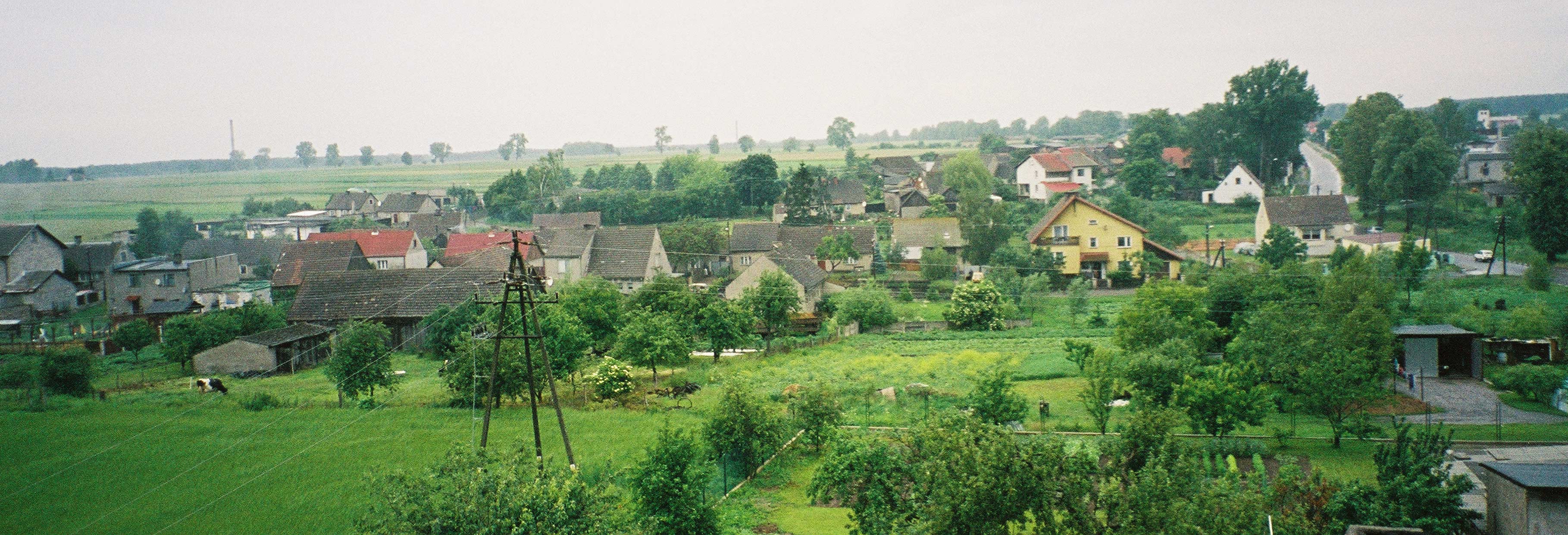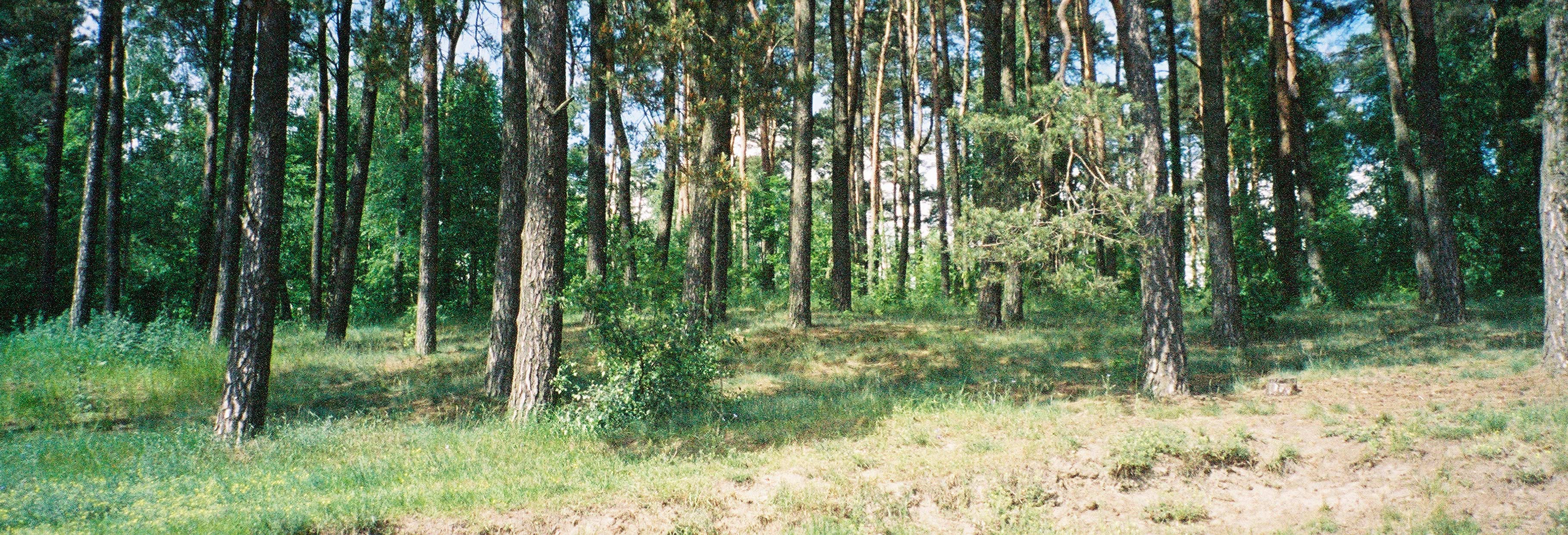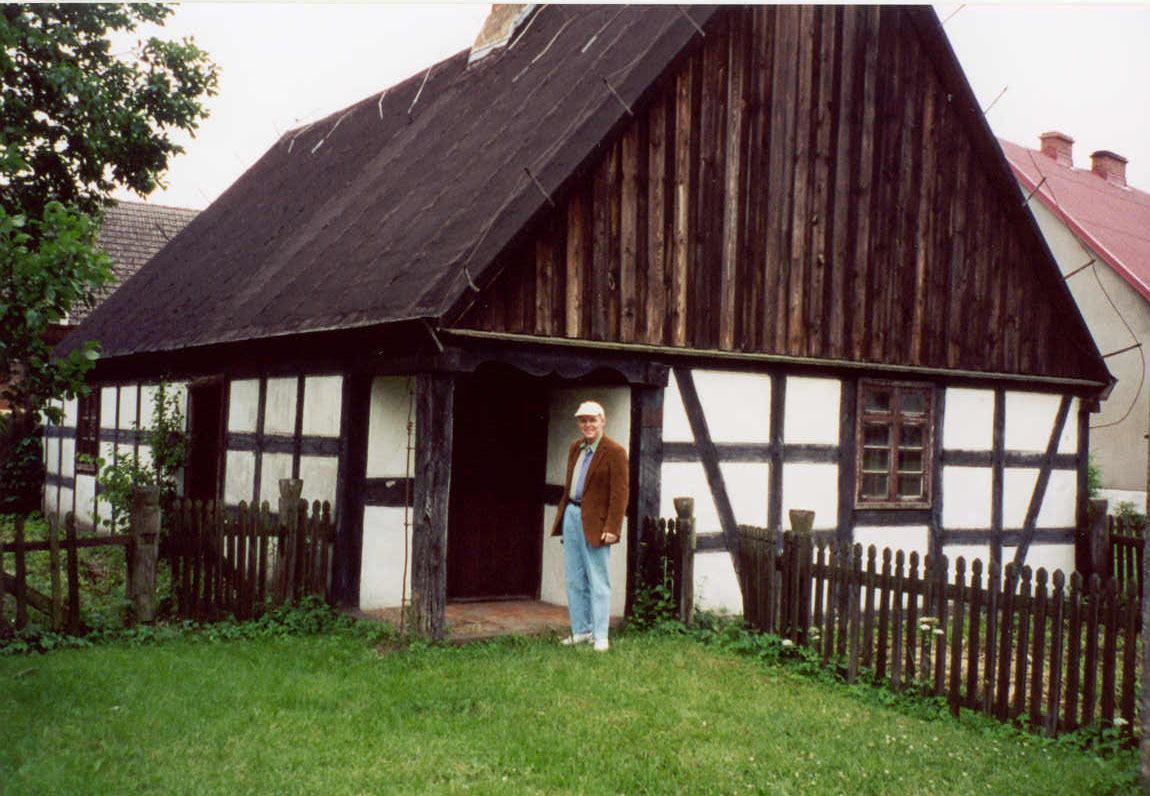
Schwente (Swieta), Kreis Flatow, West Prussia
History of Schwente
In 1608 the village of Schwente was almost abandoned as war and plague decimated it. In 1618, the village of Schwente in West Prussia had 201/2 cultivated farms (Hufe). From these farms were paid a tax of 26 Floren and 15 Groschen. Additionally 1 Floren and 15 Groschen were paid by 3 non-cultivated farms; 8 Groschen by 2 farmers and 4 Groschen by a business enterprise.

Click here to enlarge the above picture.
The schultz privileg was established in 1707 by Valentin Marczynski. Until 1725, Schwente had only Polish inhabitants and until 1751 only a Polish schultz. However, the village suffered terribly in the third Swedish War from 1700 to 1721; this war was also called the Big Nordic War in German or the
Great Northern War in English. The village was burned and also suffered from the plague epidemic of 1709 to 1711. Since few of the original Polish settlers remained, the landowners of Flatow (the Dzialynski family) brought in German settlers.To accommodate the German settlers, Schwente was divided into two villages: a German one and the Polish one. There was already a Polish schultz so an additional schultz was appointed for the German settlers. Thus, Schwente was an exceptional case in that German and Polish inhabitants each had their own schultz.
Schwente N° 2 - the German Village
The first German schultz was David Wenske (Wenski). He was a member of the Wieckowski family, a minor Polish noble family originally from Wienskowo, Kreis Schwetz. This family also owned nearby
Wusters village. Wusters was still owned by the family in 1772. Apparently David served as an officer in the Swedish or Saxon Army in the Great Northern War where he presumably converted from Catholicism to Lutheranism and changed his name to Wenski thereafter.David Wenski got a paper that documented the lasting rights and duties as Frieschulze (Privilegium) from the brothers Joseph and Augustin Dzialynski, on 4 January 1732. David's sister Marianna married Lorenz Christoph Remus and moved to nearby
Lukowo. After the death of David Wenski, this schultz privilege was inherited by his oldest son Daniel; Daniel handed it over to his brother Christoph in 1769. Christoph died on 10 August 1793 at the age of 81 years. When Christoph was still alive, his son Johann managed the estate; after his death in 1793 his son Martin managed it.Martin Wenski lost his life on 14 December 1829 through an unhappy incident. He was about to shoot a partridge and due to carelessly handling the rifle he shot himself. As a result of the agreement on inheritance (Erbrezess), from 11 August 1831 Samuel Wenski got the estate. Later it passed to his son-in-law Eduard Welke (born 1826, died 1904).
Schwente N° 1 - the Polish Village
The Polish schultz privileg was documented its lasting rights and duties on 2 August 1751 by Augustin Dzialynski. That year it passed into German hands for 2050 Tympf. The schultz was Martin Remus; his spouse was Katharina née Nitz.
Essentially, the Privilegium for Schwente N° 1 was similar to the one of the German schultz of Schwente N° 2. The schultz for Schwente N° 1 had the duty to place Germans on the non-cultivated farms (Hufe) and he was not obligated to any service towards the estate owners and didn't have to place his horse-drawn vehicle to their disposal.
Frieschulze Martin Remus was followed by Christoph Remus who died in 1777, then Franz Remus who sold the estate to the inspector of the Flatow estates, Johann Eduard Münzer, on 24 March 1796 for 3333 Taler. Franz Remus and his many descendents lived in the
Vandsburg area. Münzer sold it on 21 April 1804 to the Ritterschaftsrat von Gerhard of Flatow for the same price. From Herr von Gerhard the Polish schultz was purchased by Gottlieb Remus, innkeeper from Schmirdau (Gottlieb was the son of my ancestor Johan Caspar Remus and grandson of Martin Remus). On 13 October 1806 Polish schultz passed into possession of the tenant Johann Kleinschmidt from Redel near Pretzin for 7500 Taler. Other owners were Karl Ludwig Kleinschmidt, then Daniel Siegfried Kleinschmidt from 1 June 1822; Johann Medewitz from 14 October 1834; and from 1836 Daniel Siegfried Kleinschmidt again.Martin Remus in Schwente
Martin Remus had previously lived in Schmirdau (
click here for details on Schmirdau). Following his purchase of the privileg in 1751, he moved his family here (Schwente) where some of his younger children were born. One of my great-great-great-great-great-grandfather Martin Remus' sons was Caspar Remus of kruger of Schmierdau; Caspar's wife was Catharina Helweg, both were born in Preuss Friedland parish prior to the family's move. It is likely that Martin's father was Johan Remus of Lanken and his brother was Christian Remus of Ossowo. Martin's second son was Lorenz Remus who moved southward to Rudna, Kreis Wirsitz then Bondecz, Kreis Wirsitz and his children to Bialobloty south of Poznan.Besides managing the village, the Remus family had a large plot of land at the end of the village. This large plot now contains a mill built in 1902 and grain storage towers from after WW II on the farm as shown in the following pictures:
The picture of the circa 1800 village land map following shows the land plots of Wenski and Kleinschmidt. Martin Remus previously held the Klienschmidt land. For a Map of Klienschmidt/Remus land,
Click here for the Adobe Acrobat Version.For a Map of the area,
Click here for the Adobe Acrobat Version.
In the text of the 1773 Krojanke tax records report Schultz Remus' complaints about sandy soil which needed lots of compost and about the fact that his position of Schultz was not inheritable by his sons. This may have been why this Remus family left Schwente. Much of the land was indeed sandy, especially the area where the ancient tumuli was (a prehistoric sand mount); this tumuli gave the village its name - Schwente in German or Swieta in Polish meaning holy hill. The holy hill was also an old graveyard that might have contained Martin's grave. Here is a picture:

Some of the old village remains. Here are some pictures from near the holy hill:
Other parts of the village include traditional "Prussian Wall" houses as well as Prussian Wall barns. (This style used large wood timbers for the wall, filled in with clay - when the clay began to fall out, it was often replaced with brick). Sometimes entire barns were made of clay. The house shown is from 1790:

Also the kowal (blacksmith) still has his shop in Schwente although he now makes wrought iron fences for people in Germany. Note also the stall to hold the horse to be shoed:
The village did not originally have a church so marriages and baptisms were in Flatow.
Click here for more on Flatow including the baptismal font for Martin's children.Click here for an 1806 Map with Schwente in the lower left hand corner.
Click here for an 1914 Map with Schwente in the lower left hand corner.
Click here to see more pictures and a map of the modern village.
Click here to go to other West Prussia Villages.
Please send any queries to Bill Remus at
October 29, 2006